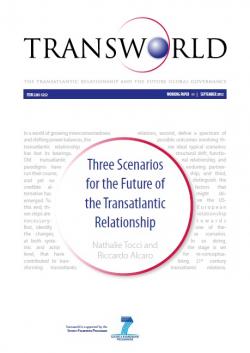Three Scenarios for the Future of the Transatlantic Relationship
In a world of growing interconnectedness and shifting power balances, the transatlantic relationship has lost its bearings. Old transatlantic paradigms have run their course, and yet no credible alternative has emerged. To this end, three steps are necessary: first, identify the changes, at both systemic and actor level, that have contributed to transforming transatlantic relations; second, define a spectrum of possible outcomes involving three ideal typical scenarios: structural drift, functional relationship, and enduring partnership; and third, distinguish the factors that might drive the US-European relationship towards one of these scenarios. In so doing, the stage is set for re-conceptualizing 21st century transatlantic relations.
Paper produced within the framework of the IAI project Transworld. Revised and updated version publ. as: "Rethinking transatlantic relations in a multipolar era", in International Politics, Vol. 51, No. 3 (May 2014), p. 366-389.
-
Details
Roma, Istituto affari internazionali, September 2012, 32 p. -
Issue
4
Introduction
1. Convergence and Crisis in Post-Cold War Transatlantic Relations
2. Structure and Actor-Level Changes in Transatlantic Relations
Systemic Changes: The Global Shift
Actor-Level Changes: US Politics and Economics and European Integration
3. Three Scenarios for the Transatlantic Relationship
Structural Drift
Enduring Partnership
Functional Partnership
4. Conditioning Factors of the Three Scenarios
Internal conditioning factors
External conditioning factors
Conclusions
Annexes
References
Topic
Tag
Related content
-
Publication24/05/2014
Rethinking Transatlantic Relations in a Multipolar Era
leggi tutto -
Ricerca27/12/2013
Transworld - Redefining the transatlantic relationship and its role in shaping global governance
leggi tutto



